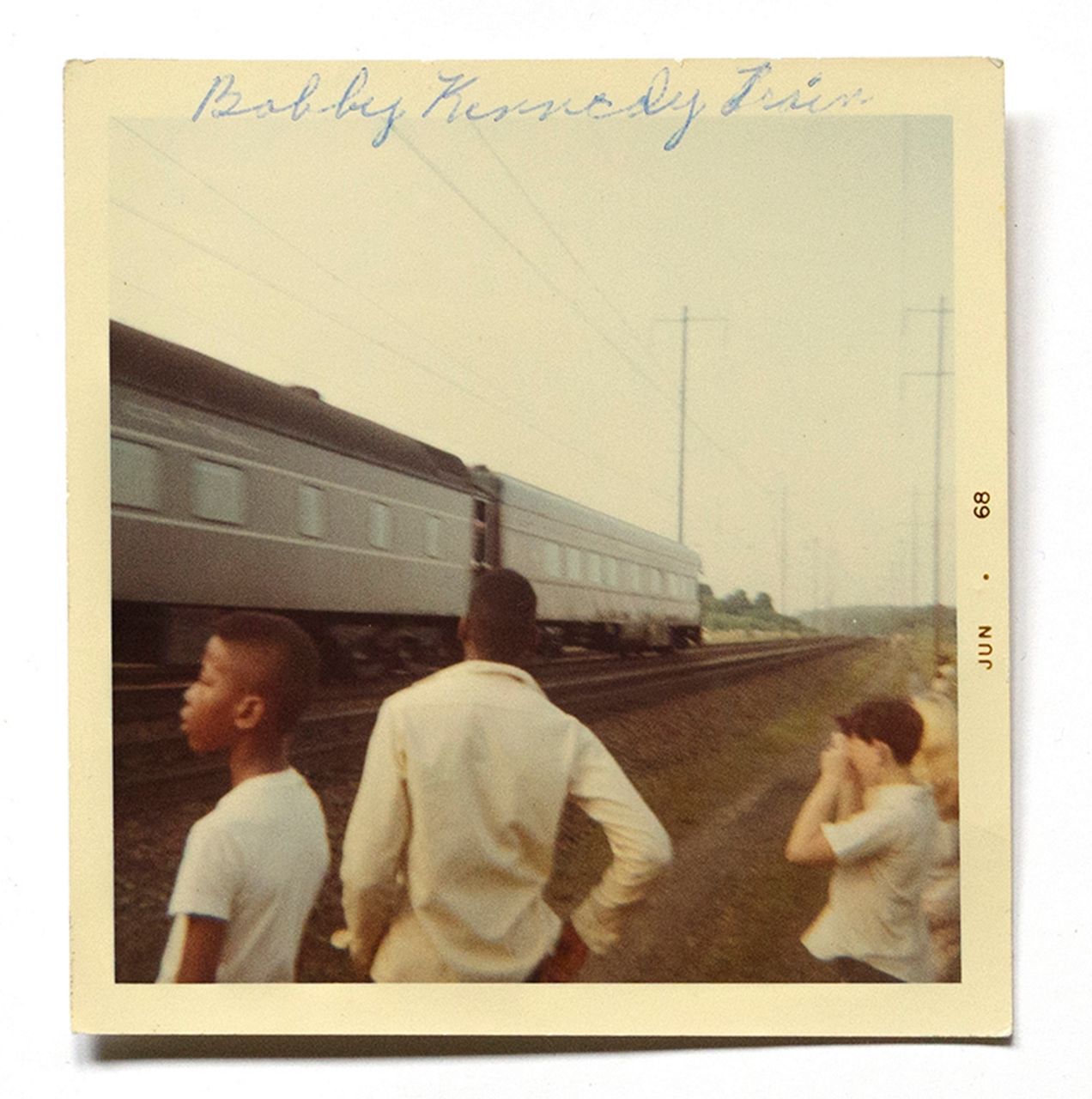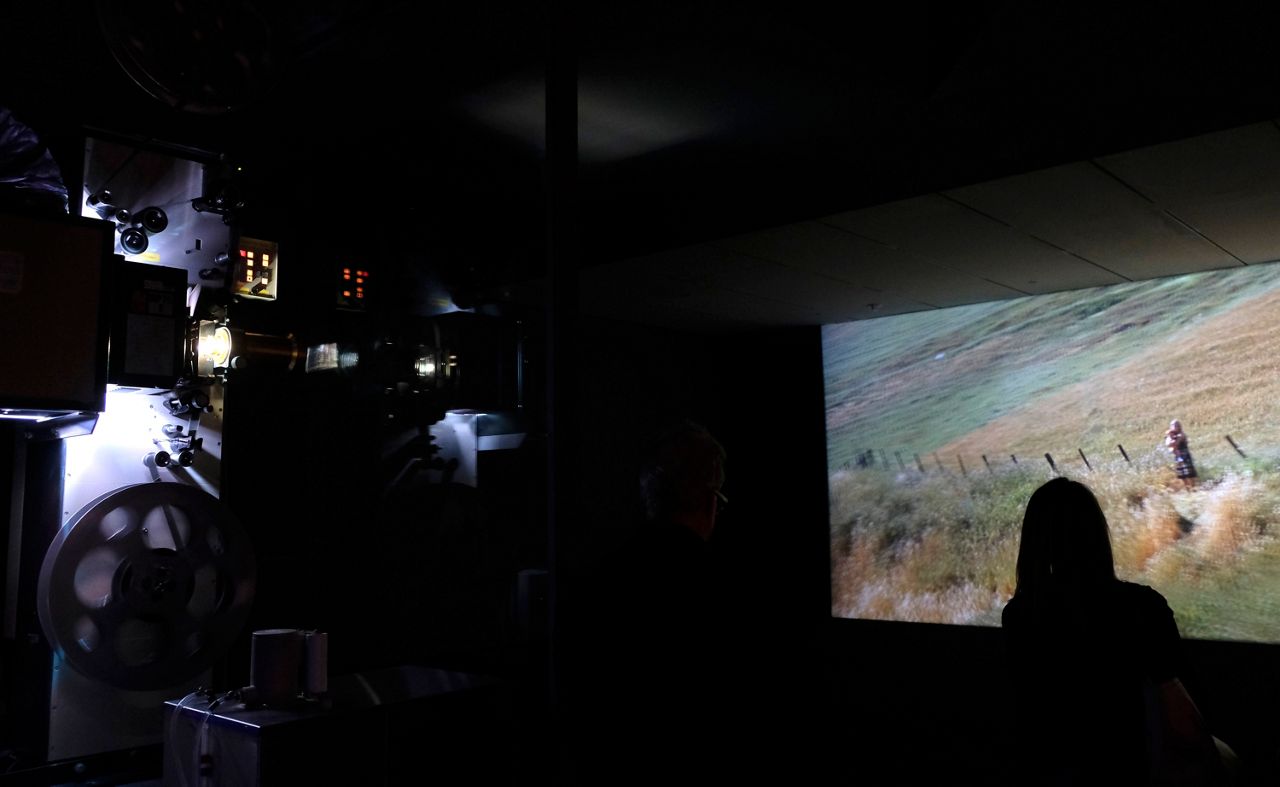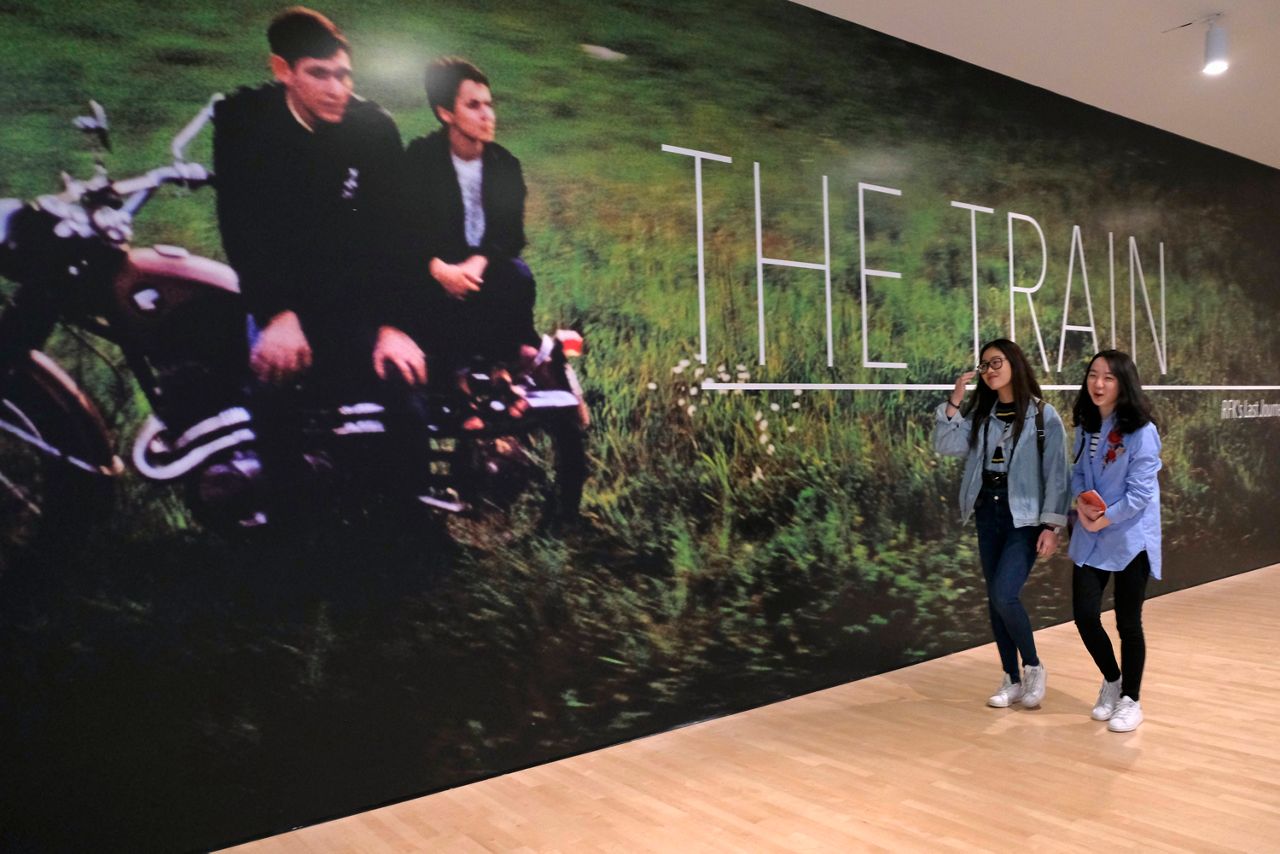SAN FRANCISCO (AP) — The assassination of Robert F. Kennedy 50 years ago this June fractured the nation just two months after the assassination of Martin Luther King, Jr. and five years after his brother John F. Kennedy was killed.
But RFK's funeral, particularly the train that took his body from New York City, following a funeral Mass at St. Patrick's Cathedral, to Washington, D.C., brought the country together: An estimated 2 million ordinary Americans gathered beside railroad tracks to honor him as the train passed by.
An exhibit at the San Francisco Museum of Modern Art, "The Train: RFK's Last Journey," displays 21 of the 1,000 unique color slides made by photographer Paul Fusco on June 8, 1968. The images captured America's grief in a way that was unusual in photography, by seeing the events through the eyes of ordinary people.
The photos show Americans of all colors and classes. Catholic schoolgirls, field hands, firefighters, blue-collar workers and housewives in their bonnets create a tableau of those who came to say farewell to the man many knew simply as "Bobby."
Some climbed fence posts to get a better view. Some saluted. Others stood rock-ribbed straight. Some waved American flags or handmade posters: "So Long Bobby." Others turned from work to see what was happening as the maroon train car holding his coffin rolled by en route to Washington, and from there to his final resting place at Arlington National Cemetery in Virginia.
Fusco, at the time a staffer for Look magazine, made the images from his unique position aboard the funeral train. He said he was astonished when the train emerged from a New York City tunnel to see hundreds of people gathering beside the tracks. At times he used a panning motion to isolate certain people and scenes, creating a blur around the edges of the images.
The exhibit also shows the importance of the day for those who were there, through a collection of personal images sought out by Dutch artist Rein Jelle Terpstra, who became fascinated with Fusco's photos and launched a research project in 2014 to collect pictures and films from the observers who watched the funeral procession go by. Among the most striking is a carefully labeled page from a photo album collage decorated with red, white and blue construction paper.
The moving exhibit also includes a 70 mm film reconstruction of the day by French artist Philippe Parreno, complete with the haunting sound of a train clacking through fields and cities.
So many people came to say goodbye to Bobby Kennedy on June 8, 1968, that the train slowed and the journey took nearly twice as long as usual, nearly eight hours to travel a typically four-hour route.
The RFK funeral train echoed a similar journey more than 100 years earlier when Abraham Lincoln's body was transported by train from Washington to his home state of Illinois in 1865, with scheduled stops along the way where crowds of people turned out to pay their respects. The trip took nearly two weeks.
Kennedy, a U.S. senator from New York, was running for president and had just won the California primary when he was shot at the Ambassador Hotel in Los Angeles by Sirhan Sirhan. Kennedy died June 6, 1968.
"The Train: RFK's Last Journey" is on display at the museum through June 10.
___
This story has been corrected to say that the train traveled from New York City to Washington, D.C., on June 8, 1968, en route to RFK's burial site at Arlington, and clarifies that service in New York City was a funeral Mass.
Copyright 2018 The Associated Press. All rights reserved. This material may not be published, broadcast, rewritten or redistributed.










